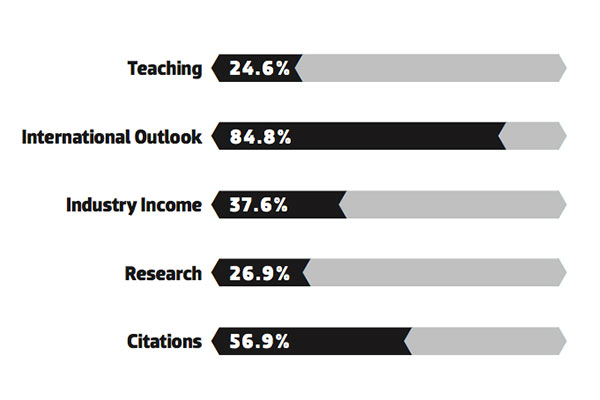Otago’s Already Shit Ranking Artificially Propped Up by Foreigners
Auckland University placed 164th which, despite being down three places on 2012, still made it the mostly highly ranked university in New Zealand. Victoria University of Wellington also slipped down the ranks, dropping down a bracket from 251-275 to 276-300. The University of Canterbury and the University of Waikato were both placed 301-350th. Otago University is now ranked tenth in the Oceania region.
Otago placed 91st for clinical, pre-clinical and health subjects, while Auckland placed 72nd in the same area. Victoria and Auckland also gained positions in the top 100 for Arts and Humanities.
Professor Vernon Squire, University of Otago Deputy Vice-Chancellor (Academic), had little to say about Otago’s shit performance. “It is pleasing that Otago has maintained its place in the 226-250 band,” he told Critic. That was all.
Using different methodology, the QS World University rankings for 2013 placed Otago at 155th worldwide.
Phil Baty, rankings editor of Times Higher Education, said that “institutions ranked outside of the top 200 are not given an exact position, as differences in performance at the lower end of the tables are slight.”
Times Higher Education employs 13 separate performance indicators, making them the “only global university performance tables to judge research-led universities across all the core missions of the modern global university – research, teaching, knowledge transfer and international activity.” The multitude of performance indicators “provides the most comprehensive and balanced comparisons, which are trusted by students, academics, university leaders, industry and governments.”
Universities are excluded from the rankings if they do not teach undergraduates, if they teach only a single narrow subject, or if their research output amounted to fewer than 1,000 articles between 2006 and 2010 (or 200 a year).
The performance indicators are grouped into five areas, each contributing to an overall ranking score:
- Teaching (30 per cent): This area assesses the learning environment of the institution, and is based on an analysis of the staff-to-student ratio, the number of PhD and undergraduate degrees awarded, the caliber of the academic staff and the results of a reputation survey.
- Research (30 per cent): This analyses the volume and reputation of research published by the institution, and the income received from that research.
- Citation impact (30 per cent): This measures the normalised average citations per paper. 50 million citations from 12,000 carefully selected academic journals and 6 million papers are analysed over a six year window (2007-2012).
- International outlook (7.5 per cent): Ratios are calculated for the number of international students and staff in comparison to total staff and students, as well as the number of scholarly papers involving international co-authors. Otago received 84.8 per cent in this area.
- Industry income (2.5 per cent): A measurement of knowledge transfer and innovation.
Otago had low ratings in teaching and research (volume, income and reputation), but scored exceptionally well in one of the least important areas – international outlook. On a slightly more positive note, the high citations score means that the research we do produce is circulating well.
For the third year in a row, California Institute of Technology came in first overall, with Harvard and Oxford Universities placing joint second.




